10 Most Popular Pet Animals In India
A pet or companion animal is an animal that is kept primarily as an act of kindness for the company of a person, for fun, or to take and save a hungry stray cat instead of a working animal, livestock, or laboratory animal. Popular pets are often noted for their attractive looks, intelligence, and dependable personality, or they can be accepted simply because they are a home necessity.
Human beings are born to receive and spread love and having a pet serves both divine purposes. Indeed, having a pet join your family is one of the most rewarding experiences. But sometimes, it can be difficult to choose the right pet for a family. Below, we’ve listed the top pet animals that are much popular among families. These pet animals have the power to amuse and fascinate anyone. A well-chosen pet may help children learn important life lessons as well. These animals teach responsibility and loyalty to human beings in a great way. Moreover, a few pet animals need immense amounts of attention and care while some prefer to stay alone in their own fantasy world. Now it depends on you how much time and effort you’re willing to sacrifice in order to keep a pet animal at your home. Use your own conscience and have a pet of your choice.
Dog
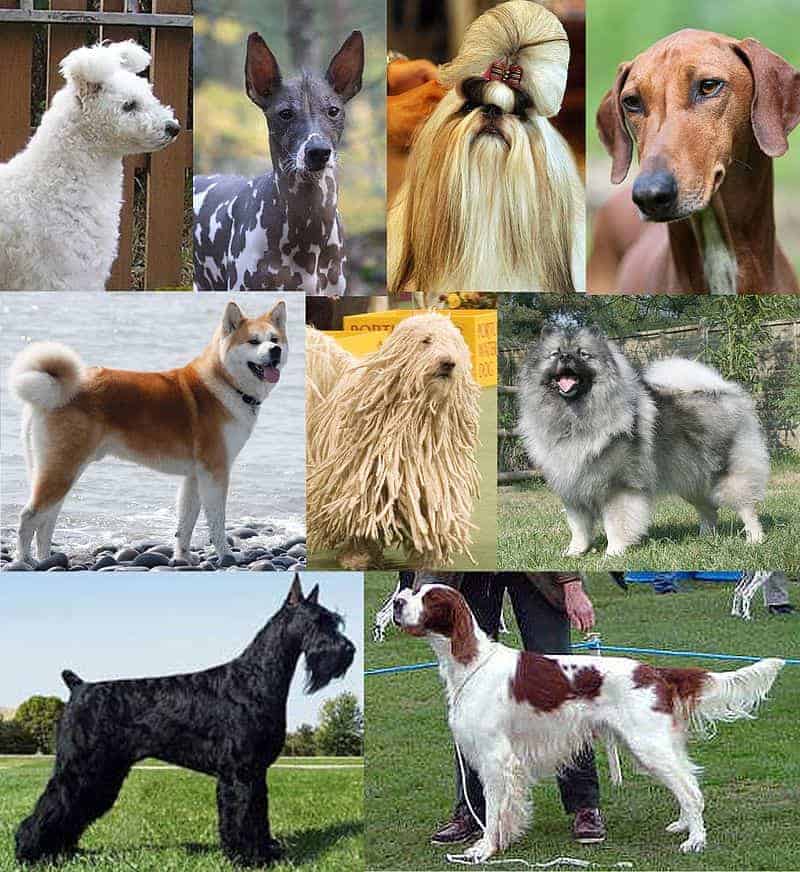
The dog (Canis familiaris when considered a distinct species or Canis lupus familiaris when considered a subspecies of the wolf) is a domesticated carnivore of the family Canidae. It is part of the wolf-like canids, and is the most widely abundant terrestrial carnivore. The dog and the extant gray wolf are sister taxa as modern wolves are not closely related to the wolves that were first domesticated, which implies that the direct ancestor of the dog is extinct. The dog was the first species to be domesticated, and has been selectively bred over millennia for various behaviors, sensory capabilities, and physical attributes.Their long association with humans has led dogs to be uniquely attuned to human behavior, and they can thrive on a starch-rich diet that would be inadequate for other canids. Dogs vary widely in shape, size, and colors. They perform many roles for humans, such as hunting, herding, pulling loads, protection, assisting police and military, companionship, and, more recently, aiding disabled people, and therapeutic roles. This influence on human society has given them the sobriquet of “man’s best friend.”
Cat

The cat (Felis catus) is a domestic species of small carnivorous mammal. It is the only domesticated species in the family Felidae and is often referred to as the domestic cat to distinguish it from the wild members of the family. A cat can either be a house cat, a farm cat or a feral cat; the latter ranges freely and avoids human contact. Domestic cats are valued by humans for companionship and their ability to hunt rodents. About 60 cat breeds are recognized by various cat registries.The cat is similar in anatomy to the other felid species: it has a strong flexible body, quick reflexes, sharp teeth and retractable claws adapted to killing small prey. Its night vision and sense of smell are well developed. Cat communication includes vocalizations like meowing, purring, trilling, hissing, growling and grunting as well as cat-specific body language. A predator that is most active at dawn and dusk, the cat is a solitary hunter but a social species. It can hear sounds too faint or too high in frequency for human ears, such as those made by mice and other small mammals. It secretes and perceives pheromones. Female domestic cats can have kittens from spring to late autumn, with litter sizes often ranging from two to five kittens. Domestic cats are bred and shown at events as registered pedigreed cats, a hobby known as cat fancy. Failure to control breeding of pet cats by spaying and neutering, as well as abandonment of pets, resulted in large numbers of feral cats worldwide, contributing to the extinction of entire bird, mammal, and reptile species, and evoking population control. Cats were first domesticated in the Near East around 7500 BC. It was long thought that cat domestication was initiated in ancient Egypt, as since around 3100 BC veneration was given to cats in ancient Egypt. As of 2017, the domestic cat was the second-most popular pet in the United States, with 95 million cats owned. In the United Kingdom, around 7.3 million cats lived in more than 4.8 million households as of 2019.
Rabbit
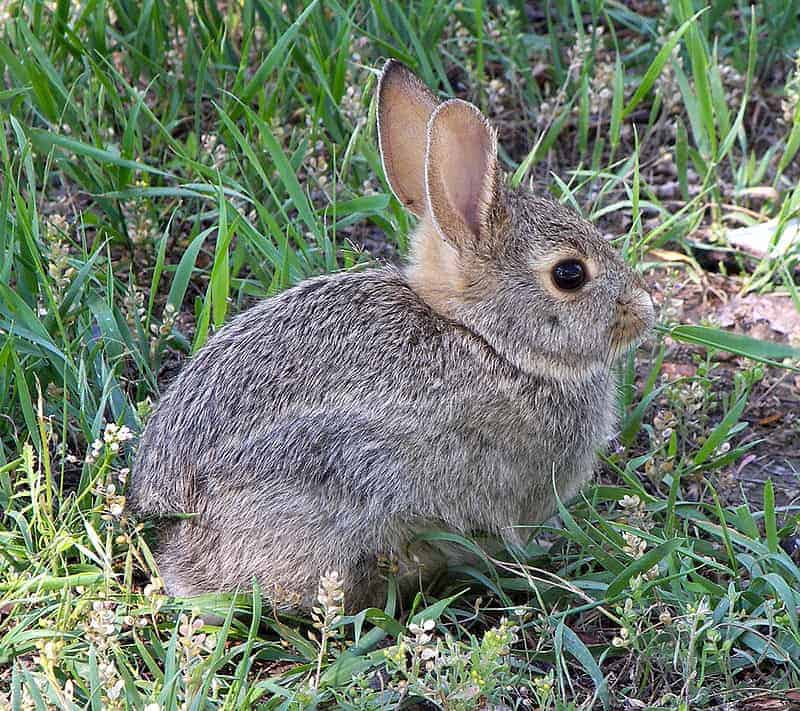
Rabbits are small mammals in the family Leporidae of the order Lagomorpha (along with the hare and the pika). Oryctolagus cuniculus includes the European rabbit species and its descendants, the world’s 305 breeds of domestic rabbit. Sylvilagus includes 13 wild rabbit species, among them the seven types of cottontail. The European rabbit, which has been introduced on every continent except Antarctica, is familiar throughout the world as a wild prey animal and as a domesticated form of livestock and pet. With its widespread effect on ecologies and cultures, the rabbit (or bunny) is, in many areas of the world, a part of daily life—as food, clothing, a companion, and a source of artistic inspiration.
Although once considered rodents, lagomorphs like rabbits have been discovered to have diverged separately and earlier than their rodent cousins, and have a number of traits rodents lack, like two extra incisors.
Read More About Rabbit / Source
Hamsters
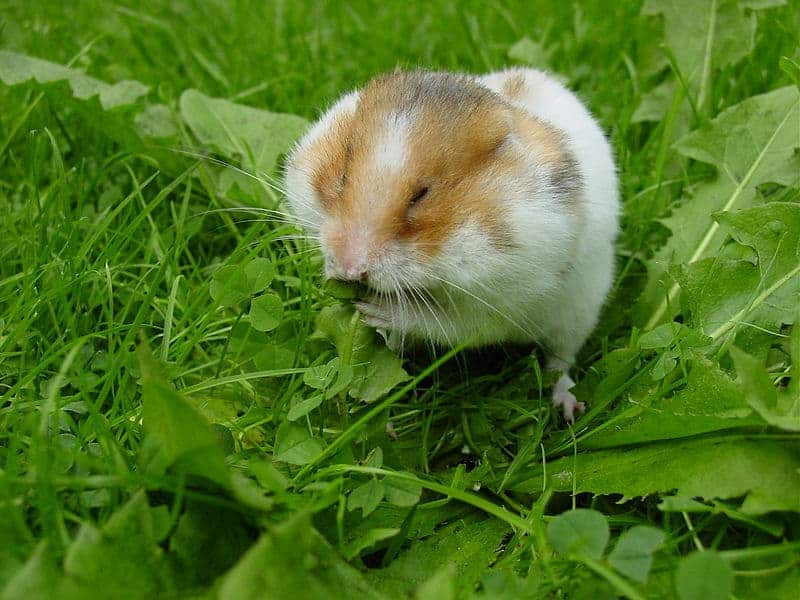
Hamsters are rodents (order Rodentia) belonging to the subfamily Cricetinae, which contains 19 species classified in seven genera. They have become established as popular small pets. The best-known species of hamster is the golden or Syrian hamster (Mesocricetus auratus), which is the type most commonly kept as pets. Other hamster species commonly kept as pets are the three species of dwarf hamster, Campbell’s dwarf hamster (Phodopus campbelli), the winter white dwarf hamster (Phodopus sungorus) and the Roborovski hamster (Phodopus roborovskii).
Hamsters are more crepuscular than nocturnal and, in the wild, remain underground during the day to avoid being caught by predators. They feed primarily on seeds, fruits, and vegetation, and will occasionally eat burrowing insects. Physically, they are stout-bodied with distinguishing features that include elongated cheek pouches extending to their shoulders, which they use to carry food back to their burrows, as well as a short tail and fur-covered feet.
Read More About Hamsters / Source
Guinea Pigs

The guinea pig or domestic guinea pig (Cavia porcellus), also known as cavy or domestic cavy (), is a species of rodent belonging to the family Caviidae and the genus Cavia. Despite their common name, guinea pigs are not native to Guinea, nor are they closely biologically related to pigs, and the origin of the name is still unclear. They originated in the Andes of South America. Studies based on biochemistry and hybridization suggest they are domesticated descendants of a closely related species of cavy, such as C. tschudii, and do not exist naturally in the wild. They were originally domesticated as livestock, for a source of meat, and continue to be consumed as food.
In Western society, the domestic guinea pig has enjoyed widespread popularity as a pocket pet, since its introduction to Europe and North America by European traders in the 16th century. Their docile nature, friendly responsiveness to handling and feeding, and the relative ease of caring for them have made guinea pigs a continuing popular choice of household pet. Organizations devoted to the competitive breeding of guinea pigs have been formed worldwide. Many specialized breeds, with varying coat colors and textures, are selected by breeders.
The domestic guinea pig plays an important role in folk culture for many indigenous Andean peoples, especially as a food source. It is also used in folk medicine and in community religious ceremonies. The animals are used for meat and are a culinary staple in the Andes Mountains, where they are known as cuy.
In the 1960s a modern breeding program was started in Peru that resulted in large breeds known as cuy mejorados (improved cuy). Marketers tried to increase consumption of the animal outside South America.Biological experimentation on domestic guinea pigs has been carried out since the 17th century. The animals were used so frequently as model organisms in the 19th and 20th centuries that the epithet guinea pig came into use to describe a human test subject. Since that time, they have been largely replaced by other rodents, such as mice and rats. However, they are still used in research, primarily as models to study such human medical conditions as juvenile diabetes, tuberculosis, scurvy (like humans, they require dietary intake of vitamin C), and pregnancy complications.
Read More About Guinea Pigs / Source
Lizard
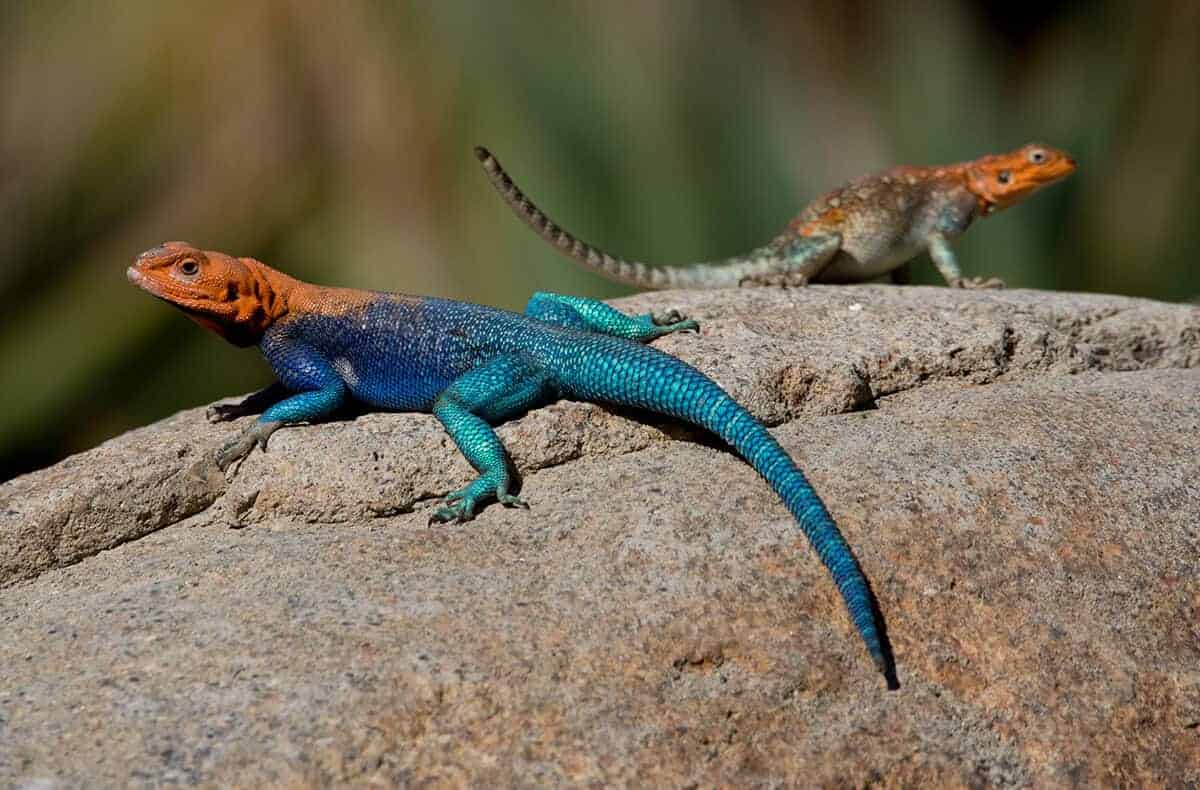
Lizards are a widespread group of squamate reptiles, with over 6,000 species, ranging across all continents except Antarctica, as well as most oceanic island chains. The group is paraphyletic as it excludes the snakes and Amphisbaenia; some lizards are more closely related to these two excluded groups than they are to other lizards. Lizards range in size from chameleons and geckos a few centimeters long to the 3 meter long Komodo dragon.
Most lizards are quadrupedal, running with a strong side-to-side motion. Others are legless, and have long snake-like bodies. Some such as the forest-dwelling Draco lizards are able to glide. They are often territorial, the males fighting off other males and signalling, often with brightly colours, to attract mates and to intimidate rivals. Lizards are mainly carnivorous, often being sit-and-wait predators; many smaller species eat insects, while the Komodo eats mammals as big as water buffalo.
Lizards make use of a variety of antipredator adaptations, including venom, camouflage, reflex bleeding, and the ability to sacrifice and regrow their tails.
Read More About Lizard / Source
Fish
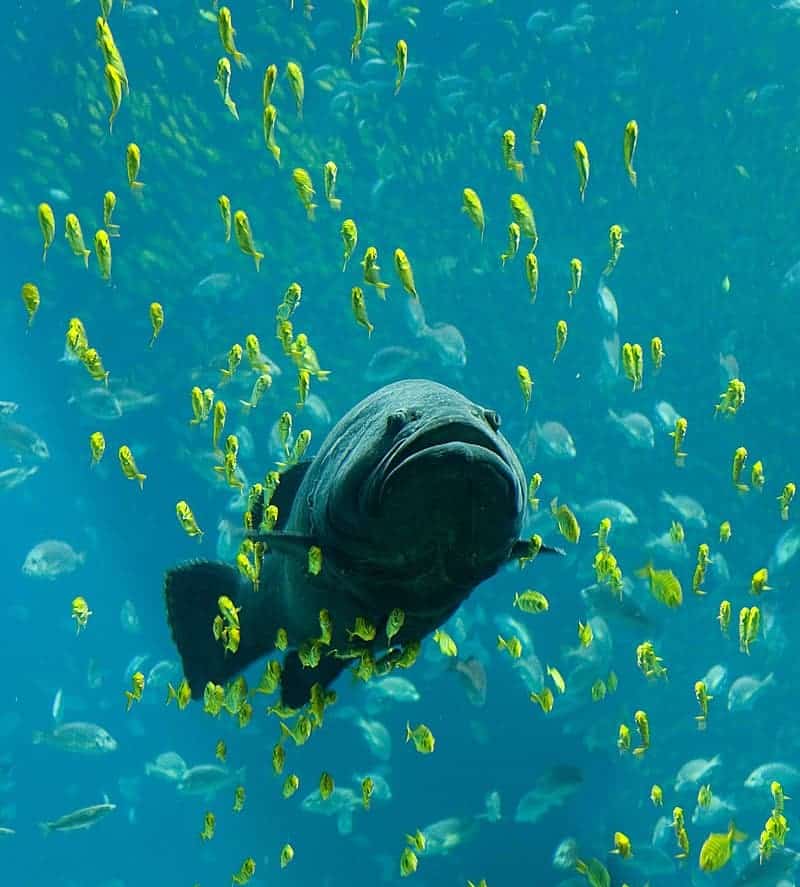
Fish are gill-bearing aquatic craniate animals that lack limbs with digits. They form a sister group to the tunicates, together forming the olfactores. Included in this definition are the living hagfish, lampreys, and cartilaginous and bony fish as well as various extinct related groups.
The earliest organisms that can be classified as fish were soft-bodied chordates that first appeared during the Cambrian period. Although they lacked a true spine, they possessed notochords which allowed them to be more agile than their invertebrate counterparts. Fish would continue to evolve through the Paleozoic era, diversifying into a wide variety of forms. Many fish of the Paleozoic developed external armor that protected them from predators. The first fish with jaws appeared in the Silurian period, after which many (such as sharks) became formidable marine predators rather than just the prey of arthropods.
Most fish are ectothermic (“cold-blooded”), allowing their body temperatures to vary as ambient temperatures change, though some of the large active swimmers like white shark and tuna can hold a higher core temperature.Fish can communicate in their underwater environments through the use of acoustic communication. Acoustic communication in fish involves the transmission of acoustic signals from one individual of a species to another. The production of sounds as a means of communication among fish is most often used in the context of feeding, aggression or courtship behaviour. The sounds emitted by fish can vary depending on the species and stimulus involved. They can produce either stridulatory sounds by moving components of the skeletal system, or can produce non-stridulatory sounds by manipulating specialized organs such as the swimbladder.Fish are abundant in most bodies of water. They can be found in nearly all aquatic environments, from high mountain streams (e.g., char and gudgeon) to the abyssal and even hadal depths of the deepest oceans (e.g., cusk-eels and snailfish), although no species has yet been documented in the deepest 25% of the ocean. With 34,300 described species, fish exhibit greater species diversity than any other group of vertebrates.Fish are an important resource for humans worldwide, especially as food. Commercial and subsistence fishers hunt fish in wild fisheries or farm them in ponds or in cages in the ocean (in aquaculture). They are also caught by recreational fishers, kept as pets, raised by fishkeepers, and exhibited in public aquaria. Fish have had a role in culture through the ages, serving as deities, religious symbols, and as the subjects of art, books and movies.
Tetrapods emerged within lobe-finned fishes, so cladistically they are fish as well. However, traditionally fish are rendered paraphyletic by excluding the tetrapods (i.e., the amphibians, reptiles, birds and mammals which all descended from within the same ancestry). Because in this manner the term “fish” is defined negatively as a paraphyletic group, it is not considered a formal taxonomic grouping in systematic biology, unless it is used in the cladistic sense, including tetrapods. The traditional term pisces (also ichthyes) is considered a typological, but not a phylogenetic classification.
Ferrets
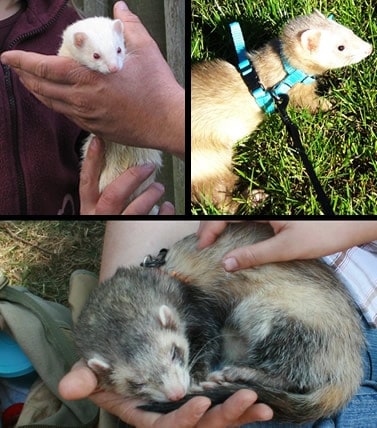
The ferret (Mustela putorius furo) is the domesticated form of the European polecat, a mammal belonging to the same genus as the weasel, Mustela, in the family Mustelidae. Their fur is typically brown, black, white, or mixed. They have an average length of 51 cm (20 in), including a 13 cm (5.1 in) tail, weigh about between 0.7 and 2.0 kg (1.5 and 4.4 lb), and have a natural lifespan of 7 to 10 years. Ferrets are sexually dimorphic predators, with males being substantially larger than females.
The history of the ferret’s domestication is uncertain, like that of most other domestic animals, but it is likely that they have been domesticated for at least 2,500 years. They are still used for hunting rabbits in some parts of the world, but increasingly they are kept only as pets.
Being so closely related to polecats, ferrets easily hybridize with them, and this has occasionally resulted in feral colonies of polecat–ferret hybrids that have caused damage to native fauna, especially in New Zealand. As a result, New Zealand and some other parts of the world have imposed restrictions on the keeping of ferrets.
Several other mustelids are also known as ferrets, such as the black-footed ferret, an endangered species native to North America.
Read More About Ferrets / Source
Birds
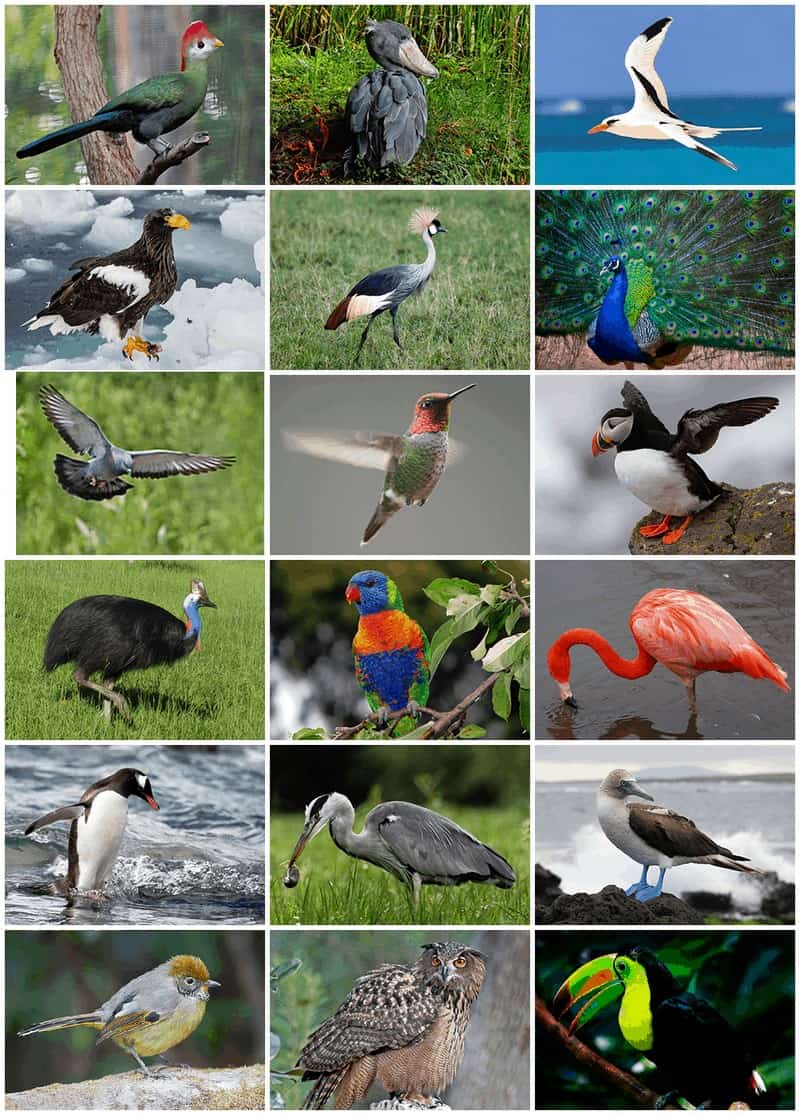
Birds are a group of warm-blooded vertebrates constituting the class Aves , characterized by feathers, toothless beaked jaws, the laying of hard-shelled eggs, a high metabolic rate, a four-chambered heart, and a strong yet lightweight skeleton. Birds live worldwide and range in size from the 5 cm (2 in) bee hummingbird to the 2.75 m (9 ft) ostrich. There are about ten thousand living species, more than half of which are passerine, or “perching” birds. Birds have wings whose development varies according to species; the only known groups without wings are the extinct moa and elephant birds. Wings, which evolved from forelimbs, gave birds the ability to fly, although further evolution has led to the loss of flight in some birds, including ratites, penguins, and diverse endemic island species. The digestive and respiratory systems of birds are also uniquely adapted for flight. Some bird species of aquatic environments, particularly seabirds and some waterbirds, have further evolved for swimming.
Birds are a group of feathered theropod dinosaurs, and constitute the only living dinosaurs. Likewise, birds are considered reptiles in the modern cladistic sense of the term, and their closest living relatives are the crocodilians. Birds are descendants of the primitive avialans (whose members include Archaeopteryx) which first appeared about 160 million years ago (mya) in China. According to DNA evidence, modern birds (Neornithes) evolved in the Middle to Late Cretaceous, and diversified dramatically around the time of the Cretaceous–Paleogene extinction event 66 mya, which killed off the pterosaurs and all non-avian dinosaurs.
Many social species pass on knowledge across generations, which is considered a form of culture. Birds are social, communicating with visual signals, calls, and songs, and participating in such behaviours as cooperative breeding and hunting, flocking, and mobbing of predators. The vast majority of bird species are socially (but not necessarily sexually) monogamous, usually for one breeding season at a time, sometimes for years, but rarely for life. Other species have breeding systems that are polygynous (one male with many females) or, rarely, polyandrous (one female with many males). Birds produce offspring by laying eggs which are fertilised through sexual reproduction. They are usually laid in a nest and incubated by the parents. Most birds have an extended period of parental care after hatching.
Many species of birds are economically important as food for human consumption and raw material in manufacturing, with domesticated and undomesticated birds being important sources of eggs, meat, and feathers. Songbirds, parrots, and other species are popular as pets. Guano (bird excrement) is harvested for use as a fertiliser. Birds figure throughout human culture. About 120 to 130 species have become extinct due to human activity since the 17th century, and hundreds more before then. Human activity threatens about 1,200 bird species with extinction, though efforts are underway to protect them. Recreational birdwatching is an important part of the ecotourism industry.
Read More About Birds / Source
Turtles

Turtles are reptiles of the order Chelonia or Testudines . They are characterized by a special bony or cartilaginous shell developed from their ribs that acts as a shield. Colloquially, the word “turtle” is generally restricted to fresh-water and sea-dwelling Testudines. Testudines includes both extant (living) and extinct species. Its earliest known members date from the Middle Jurassic. Turtles are one of the oldest reptile groups, more ancient than snakes or crocodilians. Of the 360 known extant species, some are highly endangered.Turtles are ectotherms—commonly called cold-blooded—meaning that their internal temperature varies according to the ambient environment. However, because of their high metabolic rate, leatherback sea turtles have a body temperature that is noticeably higher than that of the surrounding water. Turtles are classified as amniotes, along with other reptiles, birds, and mammals. Like other amniotes, turtles breathe air and do not lay eggs underwater, although many species live in or around water.
A group of turtles is known as a bale.
Read More About Turtles / Source
